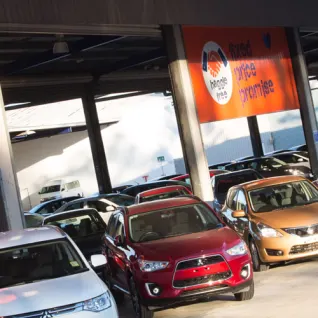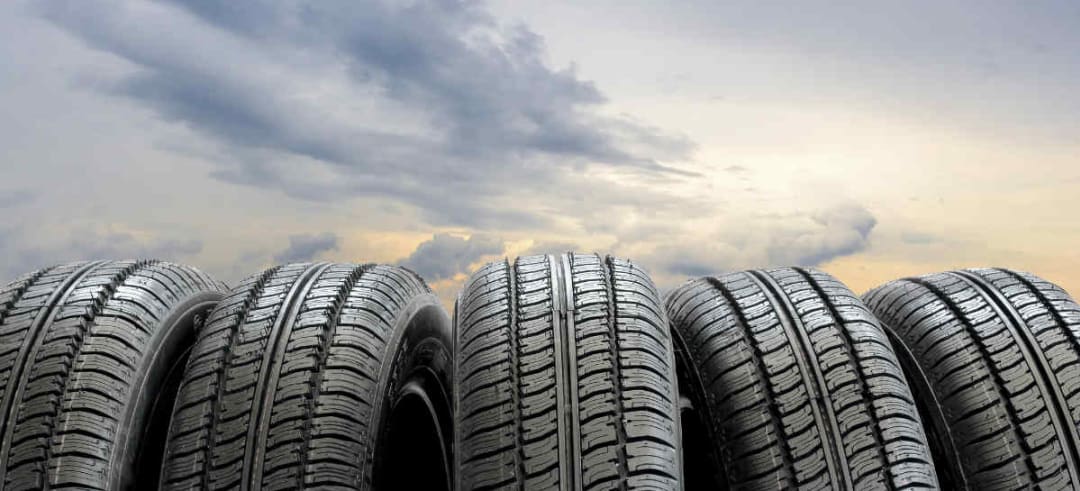
Choosing The Right Tyres For Your Car
Posted in Bigbox Service Tips
Published Sat 18 Feb 2023
Choosing The Right Tyres For Your Car
When it comes to buying new tyres, most of us usually pick out whatever is at the best price.
Unfortunately, we might actually be costing ourselves more money in the long run. Given that tyres are one of the most important aspects of our car, shouldn’t we put in a little more thought into what we’re picking? After all, they’re the only part of the car that’s always touching the road.
Now I know what you’re thinking, “but aren’t all tyres basically the same?”.
Well, no, there is a difference in what you pay and here’s how to choose the right tyre for you and your car.

Different types of tyres for different types of cars/driving
Different cars require different types of tyres. If you own a fast, performance vehicle that you plan to take to the track, your driving style requires tyres that are built for handling, endurance and braking. Four-wheel drive vehicles require tyres that provide maximum traction, larger size to compensate for the larger vehicle and loading capacity.
Other considerations for your vehicle’s driving style may include fuel efficiency or comfort. Some tyres provide a more comfortable ride than others and of course, bigger tyres decrease fuel efficiency due to their heavier weight.
Taking into consideration what vehicle your drive and what your driving style is, how can you pick the right tyres?
How to read a tyre
If you’ve ever looked closely at a tyre you probably would have noticed that there’s a bunch of numbers and letters around it. What do they mean? Well, these numbers and letters are the vital information you need to know which tyre is right for you.
In Australia, the general standard for most passenger vehicles is that tyres will either start with a P or an LT. P stands for Passenger vehicle and LT stands for Light Truck.
This is then followed by the width of the tyre in millimetres.
The number after this is the “aspect ratio” which is the tyre’s height as a percentage of the width.
The next number is the Rim size in inches. This number will typically have an R in front of it.
At the end, there will be a number and a letter to specify the tyre load index and speed rating.
You can also find all the other specifications of the tyre such as what it’s constructed of, on the sidewall of the tyre.
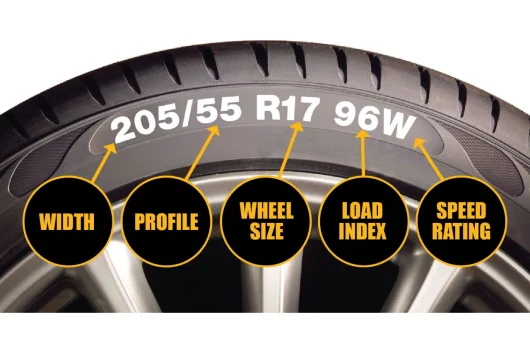
As an example, this tyre reads 205/55 R17 96W
You can read this by breaking it down into its elements.
Width: There is 205mm between the two thickest points of the tyre.
Larger cars require wider tyres to be able to handle correctly on the road. A hatchback, for example, might only require tyres from between 170-200mm thick whilst a 4WD requires tyres at least 265mm thick.
Aspect Ratio: A tyre’s aspect ratio, which can also be known as the ‘profile’, refers to the height of the sidewall as a percentage of the width. So, this tyre has a profile of 55 or 165mm which means its a low profile.
Most passenger cars will have a profile between 50-60 and most 4WD’s have a larger profile of about 70. The aspect ratio refers to the amount of tyre between the road and the tyre’s rim. A handy trick to remember is that the lower the profile the better the road-holding performance but the harsher the ride as there is less rubber to absorb the road bumps.
Construction: There are three main types of tyre construction.
1. Diagonal Cross-Ply
2. Radial Ply
3. Bia belted
The most common type is Radial ply which for our example above is marked by the letter R before the wheel size.
These constructed tyres are made so that the sidewall can be flexible at speed, giving the driver more control of the car.
Wheel Size: Followed by the construction letter, is the number that refers to the rim/wheel diameter. For example, this tyre has a 17-inch rim diameter, which means it should be fitted with a 17-inch rim/wheel. Should you wish to change your rim sizes, you’ll need to buy tyres that match.
Load Index: Some tyres also display the load index, which informs you about how much weight that particular tyre can handle. The higher the number the more weight it can handle.
For our example above, the tyre has a load index of 96 which means it can handle 710kg.
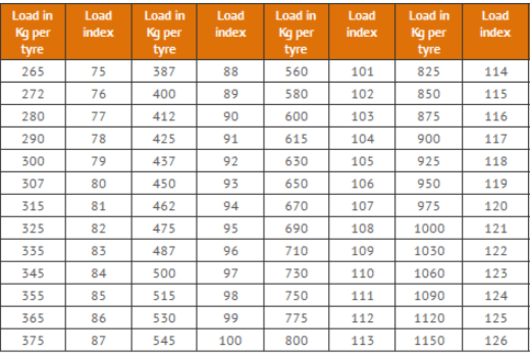
Speed Rating: After the load index, there could also be a letter that indicates the tyre’s speed rating. The further down the alphabet, the greater the speed the tyre can perform at. The only exception to this is the H-rated tyres. H-rated tyres can perform at 210km/h +.
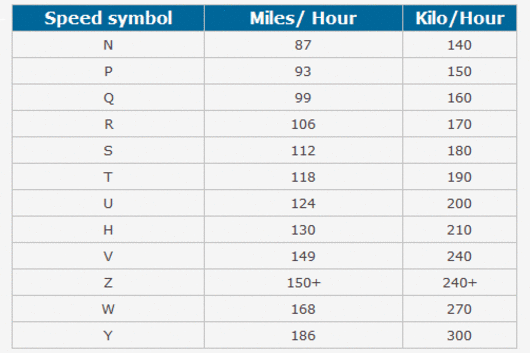
Most tyres for passenger cars are given a speed rating of S and onwards. This is sufficient enough as it means that the car can travel above 180km/h, making it safe to drive at high highway speeds without risking the tyres overheating.
Not all tyres display their load index and speed rating on the sidewall as it isn’t required by law however most tyres do have it nowadays.
So, if it’s time for a new set of tyres, think about what type of car you have, if you require tyres that will be suitable for four-wheel driving or if you would prefer a less bumpy ride and make sure you get tyres that will match the rim size you’re currently using.
Take into consideration the type of driving that you do with your car and use this information to help you pick the best tyres for you so you get the most time out of your new tyres.
If you’re still unsure, speak with our experienced and knowledgable staff here at BigBox Service & Tyres. We offer a large selection of different tyres and our highly experienced team can answer any questions you may have.

Choose.Buy.Enjoy
A better way to buy and sell used cars.

